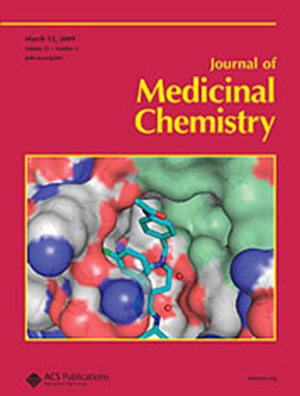Target Engagement Assays in Early Drug Discovery
IF 6.8
1区 医学
Q1 CHEMISTRY, MEDICINAL
引用次数: 0
Abstract
In target-based drug discovery, quantification of target engagement is required to build structure–activity relationships and develop a potent clinical candidate. Target engagement data also provides evidence of a drug’s mechanism of action (MoA) which although is not required for approval, can increase the chance of a successful clinical outcome. Consequently, a plethora of assays has been developed to provide information about target engagement on isolated proteins and in cells. These techniques monitor changes in stability, structure, optical properties or mass difference between proteins and their complexes with ligands. They also provide characterization of the compound with thermodynamic, kinetic and structural binding parameters. The diversity of approaches reflects the challenges faced when drugging different protein classes, with each method having advantages, trade-offs and target specificity.

早期药物发现中的靶标参与分析
在基于靶标的药物发现中,需要对靶标参与进行量化,以建立结构-活性关系并开发有效的临床候选药物。靶标接触数据还提供了药物作用机制(MoA)的证据,尽管这不是批准所必需的,但可以增加成功临床结果的机会。因此,已经开发了大量的测定方法,以提供有关分离蛋白和细胞中靶标接合的信息。这些技术监测蛋白质及其配体复合物之间的稳定性、结构、光学性质或质量差异的变化。它们还提供了化合物的热力学、动力学和结构结合参数的表征。方法的多样性反映了在给不同蛋白质类药物时所面临的挑战,每种方法都有优点,权衡和目标特异性。
本文章由计算机程序翻译,如有差异,请以英文原文为准。
求助全文
约1分钟内获得全文
求助全文
来源期刊

Journal of Medicinal Chemistry
医学-医药化学
CiteScore
4.00
自引率
11.00%
发文量
804
审稿时长
1.9 months
期刊介绍:
The Journal of Medicinal Chemistry is a prestigious biweekly peer-reviewed publication that focuses on the multifaceted field of medicinal chemistry. Since its inception in 1959 as the Journal of Medicinal and Pharmaceutical Chemistry, it has evolved to become a cornerstone in the dissemination of research findings related to the design, synthesis, and development of therapeutic agents.
The Journal of Medicinal Chemistry is recognized for its significant impact in the scientific community, as evidenced by its 2022 impact factor of 7.3. This metric reflects the journal's influence and the importance of its content in shaping the future of drug discovery and development. The journal serves as a vital resource for chemists, pharmacologists, and other researchers interested in the molecular mechanisms of drug action and the optimization of therapeutic compounds.
 求助内容:
求助内容: 应助结果提醒方式:
应助结果提醒方式:


